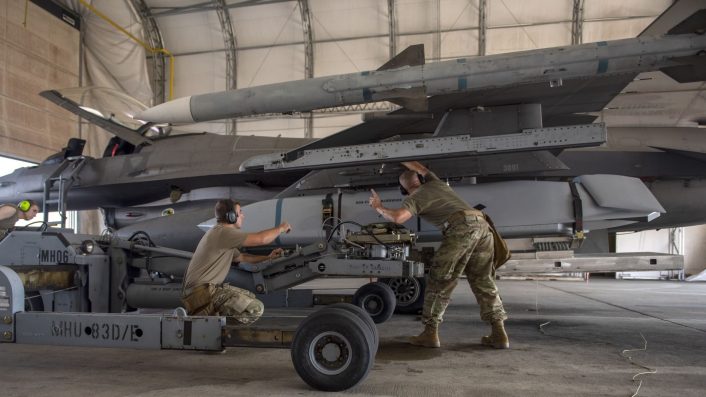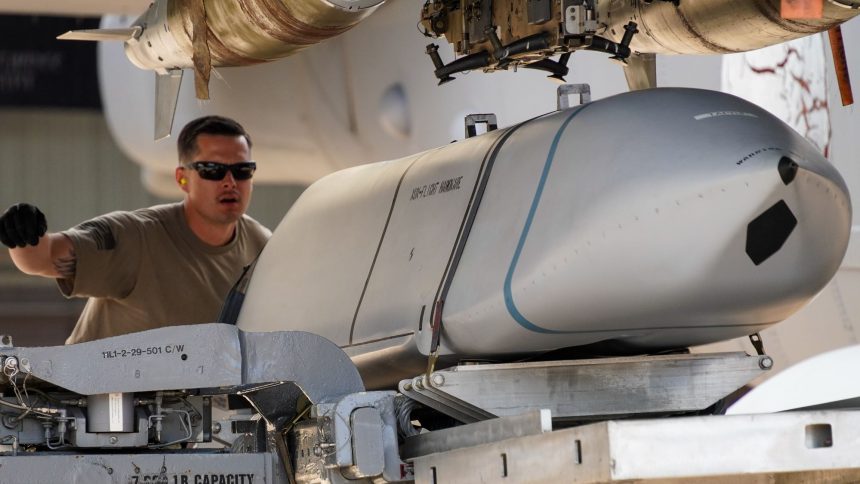The JASSM contract will supply missiles to the Air Force, Navy and Allies comprising Japan, the Netherlands, Finland and Poland. Another contract worth $358 million is meant for the LRASM and also involves an unspecified Foreign Military Sales component, possibly to Australia.
The U.S. Air Force Life-Cycle Management Center awarded Lockheed Martin two contracts on Sept. 27, 2024, collectively worth $3.5 billion, for the production of the AGM-158B JASSM (Joint Air-to-Surface Standoff Missile) and the AGM-158C LRASM (Long-Range Anti-Ship Missile), both for its own use and for Allied partner nations.
The JASSM contract will supply missiles to the Air Force, Navy and Allies comprising Japan, the Netherlands, Finland and Poland under the FMS (Foreign Military Sales) program. Another contract worth $358 million, a modification of Lot 8b, is meant for the LRASM as a “firm-fixed-price undefinitized contract” and also involves an FMS component. The statement does not identify the countries, however a possible FMS to Australia was approved in 2020 with 200 LRASMs involved.
The JASSM, its variants and the LRASM are the mainstay of U.S. and partner nations long-range standoff airborne strike, capable of being operated from the F-35 (externally), F-15, F/A-18, B-52 Stratofortress, F-16 and B-1B Lancer. The U.S. military also recently released the first images of the AGM-158C LRASM being carried in flight by an F-35C test aircraft from Naval Air Station (NAS) Patuxent River, Maryland, which took place on Sep. 9 and 10, 2024. Prior to that Lockheed Martin unveiled a mock-up of the AGM-158 Extreme Range (XR) during the U.S. Air Force’s Air, Space and Cyber 2024 gathering.
The AGM-158C LRASM (Long Range Anti-Ship Missile) is a stealth air-launched missile developed by DARPA for the U.S. Air Force and Navy. Derived from the AGM-158B JASSM-ER, the LRASM features advanced autonomous targeting capabilities, including sensor fusion, autonomous… pic.twitter.com/nj6fQJYc7h
— War Watch (@WarWatchs) October 3, 2024
Contract details
The number of missiles in the contracts for the Air Force, Navy and the Allies has not been specified, while the deliveries are expected to be completed by Jul. 31, 2032 for JASSM and Jul. 31, 2028 for LRASM, respectively, according to the contract notice. The FMS notices did not provide delivery dates.
Japan recently approved the purchase of 50 AGM-158B JASSM-ER (Extended Range) as a long-range land-strike weapon to be used by the JASDF’s (Japan Air Self-Defense Force) F-15J jets. On May 28, 2024, the Polish government also signed a contract to procure another batch of JASSM-ER in a $735 million contract covering 821 missiles, and last year also expressed interest in the JASSM-XR.
This was followed by Finland announcing the acquisition of AGM-158B JASSM-ERs on May 31, to integrate them on the F-35As expected to be delivered by 2026. Helsinki already uses the AGM-158A JASSM, which is carried by the Finnish Air Force’s FA-18C/D Hornets. The latest contract therefore could be concluded to be the subsequent step in these Allied countries acquiring the missile.
Air and Space Forces, quoting Lockheed officials, said the company is producing about 720 JASSMs annually, “en route to about 1,100.” “The JASSM is one of several munitions for which the Air Force accelerated funding and production in its fiscal 2025 budget request,” ASF added.

JASSM gaining importance
The JASSM recently figured in Ellsworth Air Force Base’s Raider Reach exercise that concluded on Sep. 20, 2024, which was its first full-scale readiness exercise in over a decade. The second phase of the drill saw the 28th Bomb Wing’s B-1B Lancer bombers practicing flying long-range global strike missions daily.
The officially released pictures also showed the 28th Maintenance Group and weapons load crews loading the DATM-158 (Dummy Air Training Missile 158) in the B-1B’s weapons bay. The DATM-158 simulates the shape and weight of the AGM-158A/B JASSM (Joint Air-to-Surface Standoff Missile) and an AGM-158C LRASM (Long-Range Anti-Ship Missile).
Meanwhile, ASF also quoted Lockheed officials, who shed more light on the JASSM-XR, revealed at the U.S. Air Force’s Air, Space and Cyber 2024 conference. While Lockheed is developing the weapon with its own internal funding, given its importance, it would be unlikely that the U.S. military would not be interested in a long-range variant that puts its launching platforms further away from adversary (Russian and Chinese) air defense missiles and fighters.
The missile would be longer by “several feet,” where the additional space could be used to house the extra fuel for the greater reach. Company officials have however not yet divulged specific details on the missile’s precise dimensions or the new expected range.
🚀 𝗟𝗼𝗰𝗸𝗵𝗲𝗲𝗱 𝗠𝗮𝗿𝘁𝗶𝗻 𝗨𝗻𝘃𝗲𝗶𝗹𝘀 𝗝𝗔𝗦𝗦𝗠 𝗫𝗥: 𝗔 𝗚𝗮𝗺𝗲-𝗖𝗵𝗮𝗻𝗴𝗲𝗿 𝗶𝗻 𝗟𝗼𝗻𝗴-𝗥𝗮𝗻𝗴𝗲 𝗠𝗶𝘀𝘀𝗶𝗹𝗲 𝗧𝗲𝗰𝗵𝗻𝗼𝗹𝗼𝗴𝘆 🚀
Lockheed Martin has introduced the AGM-158 JASSM XR (eXtreme Range), the latest addition to its advanced air-to-surface… pic.twitter.com/DGslMpheAt
— TenMinutesToMidnight (@JRNavarro75) September 27, 2024
Quoting Lockheed Martin Missiles and Fire Control vice president Michael Rothstein at a press conference, ASF report said that the range would be expanded “significantly” compared to the JASSM-ER, and that the increase “is not minor.” The AGM-158B JASSM-ER is the baseline of the extended range version, whose AGM-158B-2 and the AGM-158B-3 variants have different and upgraded electronic circuitry, guidance, navigation and seeker systems.
According to The War Zone, the AGM-158D JASSM-ER has a WDL (Weapon Data Link) capability that allows retargeting/retasking the missile mid-flight. The capability was mentioned in the Air Force’s Fiscal Year 2025 budget documentation and is still under development.
While Rothstein estimated 2026 as the date by when the JASSM-XR could first be test-flown, he added that they are still “several years out” from that stage. Quoting a Lockheed spokesperson, ASF said the firm, through the XR, is also adopting greater “modular design,” “commonality across missile variants,” like the JASSM-ER and the LRASM, proven supply chains and vendors for components to reduce development timelines and keep the costs low.









